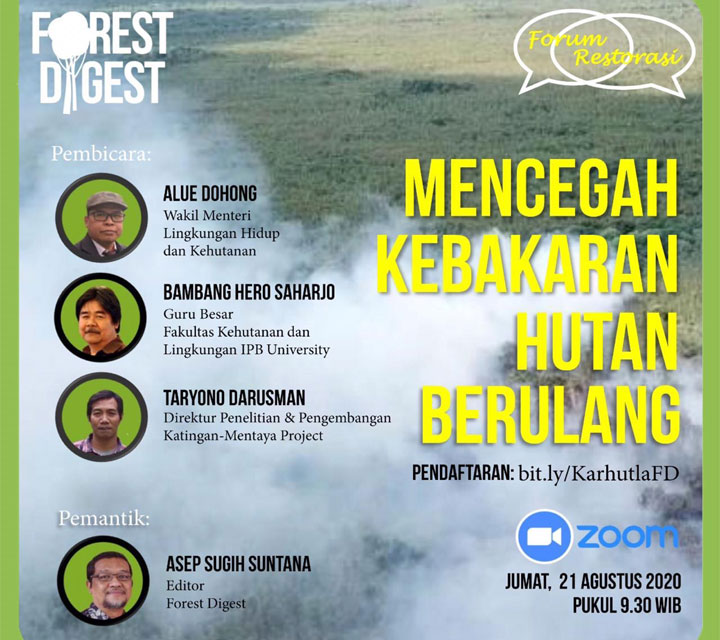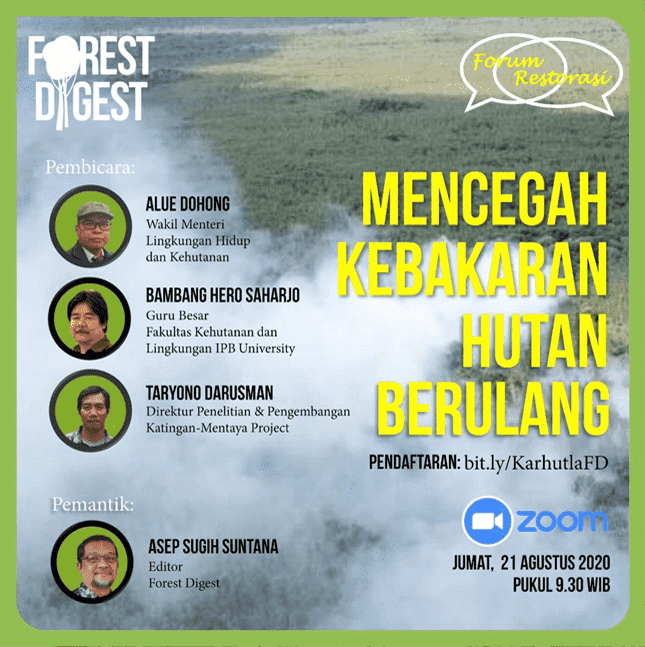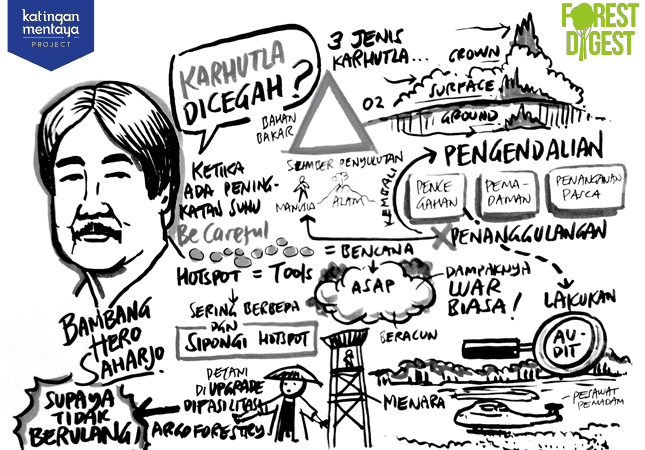
Katingan Mentaya Project collaborated with Forest Digest, a quarterly online and print media, to host several online discussions under the name Restoration Forum.
Attended by nearly 200 people, the discussion was led by Deputy Minister of Environment and Forestry, Alue Dohong, Professor Bambang Hero Saharjo, and Director of Research and Development for Katingan Mentaya Project, Taryono Darusman. Lasting for more than 2 hours, the discussion agreed that in the event of a forest fire, prevention is the best answer.


Deputy Minister of Environment and Forestry, Alue Dohong, stated that the Dayaks in Kalimantan have traditionally practiced shifting cultivation, one of which uses fire to restore and stimulate certain plants. However, the land management system in this way, said Alue, needs to be seen in its spatial and temporal context. "Forests used to be dense, with enough moisture," he stated.
Alue does not oppose the use of fire to cultivate certain parts of the land, as long as it is implemented on mineral soils found upland, not peat swamp areas. He insofar as invites the community to stop burning completely for a period of time as an effort to prevent forest and land fires, especially in peatlands that dry up during the dry season.
Meanwhile, hotspot monitoring, according to Bambang, is one way of preventing fires through the detection of temperature and smoke movement, in which many government and non-government agencies now have detectors for both. In addition, Bambang suggested that fire management administrative audits are not only carried out by government agencies, but also by industries that have a role in landscape management.


Apart from monitoring activities, community involvement is still the most effective means of preventing fire. Bambang gave an example of farmers in Jambi who managed to make a profit from the development of liberica coffee and honey which are developed, processed, and sold independently1 . "From honey, for example, a manager is able to earn up to Rp. 100 million a month," he said. By obtaining such economic benefits, the community will be motivated to protect the peat from possible fires.
Taryono Darusman agreed with Bambang. With ecosystem restoration permits since 2013 in Katingan and Mentaya, Central Kalimantan, PT Rimba Makmur Utama's main mission is to protect 149,800 hectares of its concession, 90% of which is peatland. "Because our main business is carbon sales," said Taryono, "PT RMU will receive a bad reception if land within the concession experience fires."


Not only fire, PT RMU also integrates three pillars in their land management, namely climate change, community development, and biodiversity. Because of that, PT RMU has established many partnerships, both for land protection and development. PT RMU’s land management is also accompanied with the allocation of peatland management rights to surrounding communities to cultivate the land without burning and and the use of chemicals.
1 https://www.forestdigest.com/detail/687/nikmatnya-kopi-lahan-gambut-tanpa-bakar
Buy carbon credits from Katingan
Climate change is a global challenge that requires global action. We can help you meet your commitments to deliver a brighter future.


